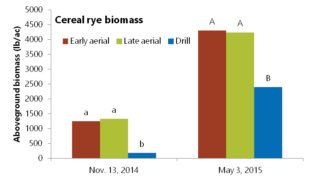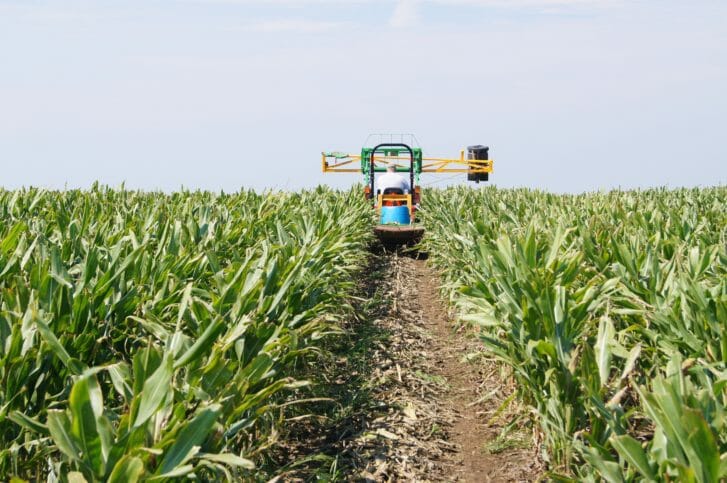RESEARCH REPORT: Effect of Seeding Date on Cover Crop Performance
Cover crops are recognized for their ability to scavenge nitrogen and possibly improve soil characteristics in corn-soybean production systems.
Farmer-cooperator Jack Boyer investigated three different cereal rye cover crop seeding dates in his seed corn field–Aug. 19 (early aerial); Aug. 29 (late aerial); Sept. 25 (drill). Cover crop performance was evaluated by assessing cover crop aboveground biomass and soil chemical and health characteristics using the Haney Test, a novel approach to soil testing.
The results of this on-farm research are presented in a new report: “Effect of Seeding Date on Cover Crop Performance.”
Among the key findings:
-
The two aerial seeding dates in August 2014 resulted in more cover crop growth in both Fall 2014 and Spring 2015 compared to the drill seeding date in September 2014 (figure below).

Aboveground biomass of cereal rye cover crop in Fall 2014 and Spring 2015 for cover crops seeded in 2014 on Aug. 19 (early aerial), Aug. 29 (late aerial) and Sept. 25 (drill).
- The two aerial seeding dates in August 2014 resulted in more cover crop growth in both Fall 2014 and Spring 2015 compared to the drill seeding date in September 2014.
-
Farmers interested in reducing potential N loss in both the fall and spring will want to consider aerially seeding cover crops in late summer to get enough cover crop growth for active uptake of nitrate. Waiting to drill in the fall after cash crop harvest did not result in enough cover crop growth in the fall but did reduce the potential for N loss the following spring as the cover crop grows out of dormancy.
- Compared to the no-cover treatment, all cover crop treatments resulted in increased soil microbial activity in the spring as determined by the Solvita method in the Haney Test.
The full report can be viewed here: “Effect of Seeding Date on Cover Crop Performance.”
For more information about this study and other studies as part of PFI’s Cooperators’ Program, contact Stefan Gailans at stefan@practical farmers.org.

